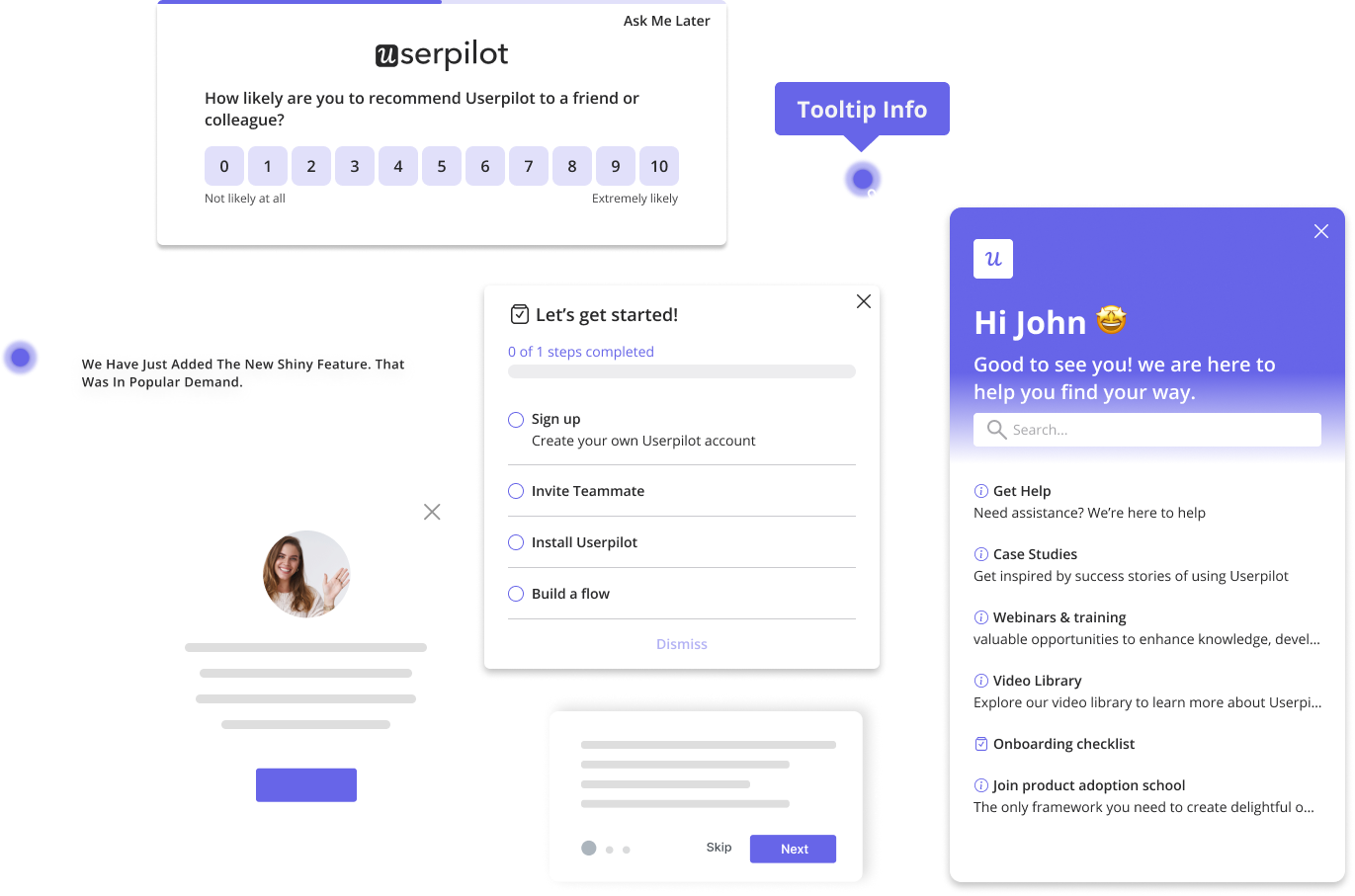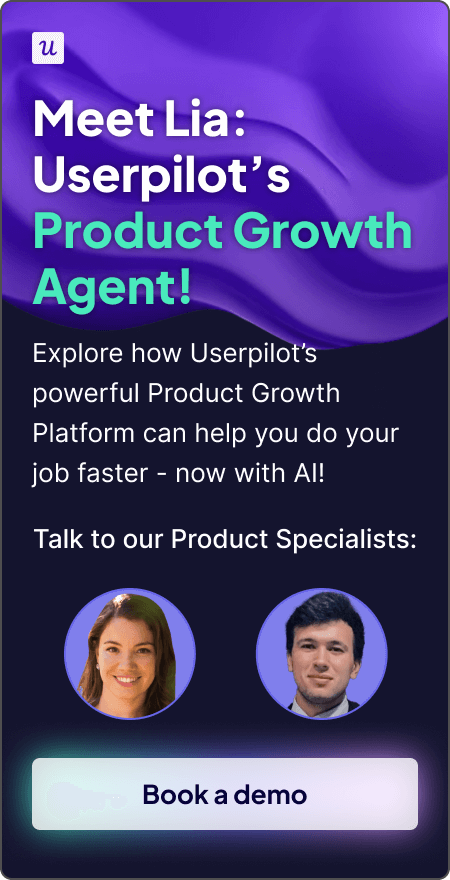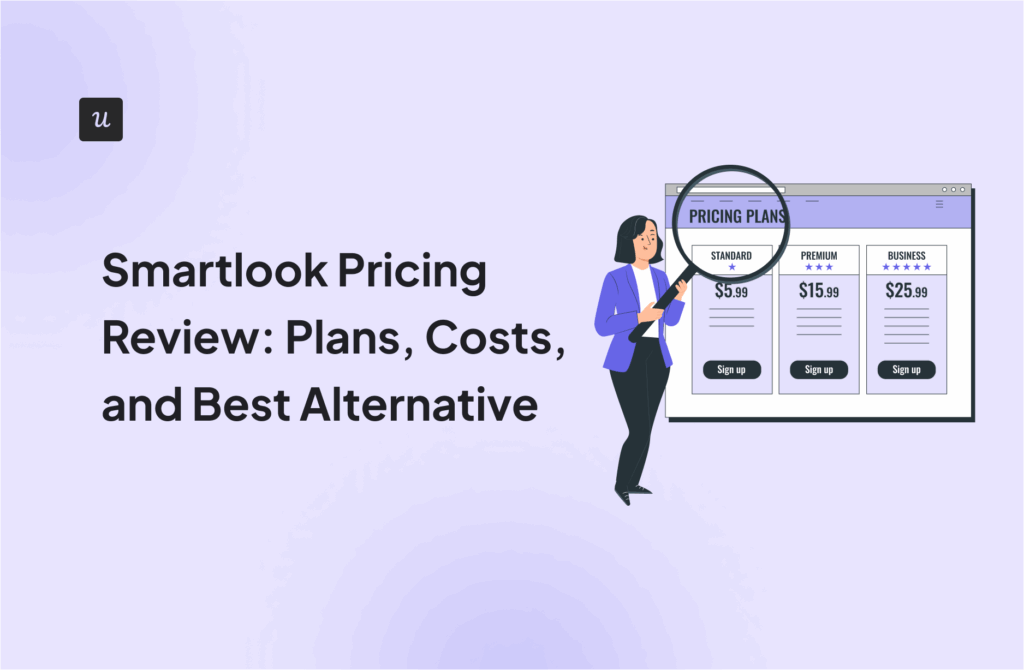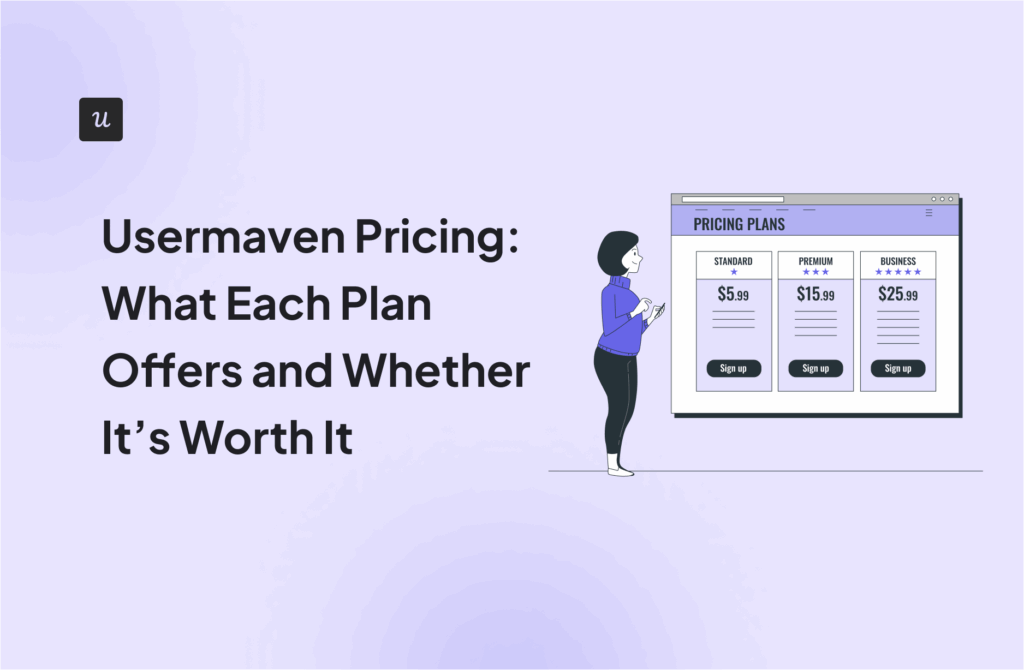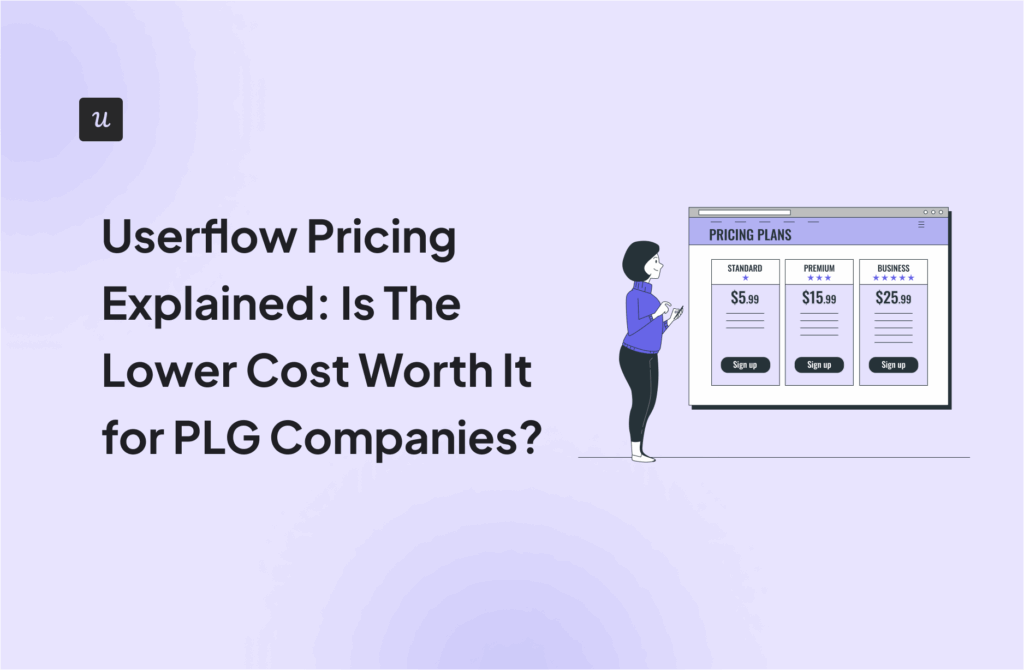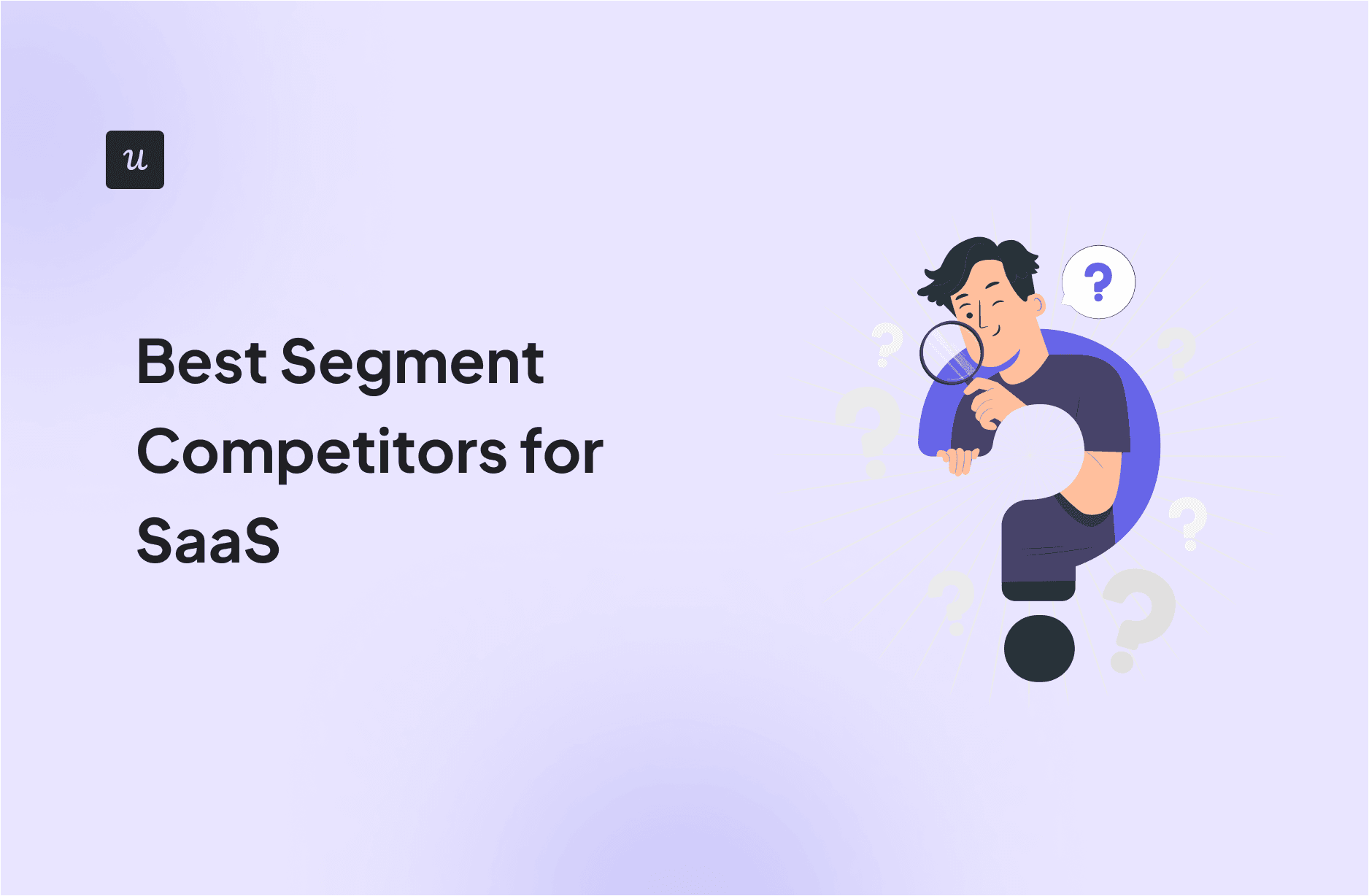
What’s the main reason you’re looking for Segment competitors?
What is your primary goal right now?
Which role best describes you?
You need more than a data pipeline. You need a growth platform.
Stop juggling multiple tools. Userpilot combines powerful product analytics with in-app messaging and user feedback, giving you a complete solution to drive growth. It’s the ideal choice for teams looking for a powerful, user-friendly, and cost-effective alternative to complex CDPs.
If you’re interested in Segment competitors, you’ve probably considered Segment for gathering your first-party event data. It promises the 360-degree customer view that every product manager needs. However, Segment isn’t perfect.
It has no native product analytics feature. It’s one of the slower CDP options. And its pricing punishes experimentation.
This article explores Segment alternatives so you can choose a tool that helps drive product adoption better.
Try Userpilot Now
See Why 1,000+ Teams Choose Userpilot
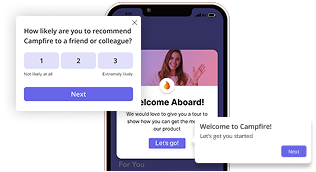
Why do teams look for Segment alternatives and competitors?
Segment grabbed huge attention after Twilio acquired it. It started as a clever way to pull first-party data from websites and apps that you could send to various tools.
Marketers appreciate how it simplifies customer segmentation and personalized campaigns without sending endless requests to engineering for custom data exports.
Engineers like Segment, too, as it saves them from writing an event tracking library and maintaining countless data pipelines themselves.
Segment does a decent job connecting data to your data warehouse; building user profiles, handling basic event transformations, and even organizing customer journeys.
But it’s different for someone like me, who wants to focus on deeply understanding user behavior and driving product-led growth. I hit three main roadblocks with the traditional customer data platform(CDP) model:
1. No native product analytics
Segment performs data collection and routing. But it doesn’t give you built-in funnels, cohort analysis, feature‑usage tracking, or in‑app behavioral dashboards. You’ll still have to add a tool like Userpilot to answer “how” and “why” questions about feature adoption and user flows.
This G2 review shows that another user has experienced this gap:
“The main problem with Segment is the analysis experience… if I want to see the conversion funnel of users who have activity 1 and only then proceed to activity 2, Twilio Segment does not have that functionality.”
2. Record‑based pricing can inhibit experimentation
Every additional event you track adds to your bill, and the cost can increase rapidly once you upgrade tiers. That pricing model, based on monthly tracked users (MTUs), can make it tough to freely explore new tracking ideas or run open‑ended A/B tests without budget anxiety.
And we aren’t the only ones who feel this way:
“Segment isn’t great for scalability and will become expensive over time.”
3. Persistent engineering dependencies
Even with Auto‑Instrumentation in Segment’s private beta, most setups still need SDK installations, custom tracking plans, and schema enforcement.
Whenever I want to add an ad hoc event or tweak my data model, I’m back in the engineering queue, slowing down my ability to act on insights.
Another user gets this:
“High learning curve for our development team for the implementation. I’m not sure why, but our development team have had a lot of issue with the tracks, in comparisson with other tools. Maybe a better onboarding with our devs.”
What to look for in Segment alternatives
While exploring these alternatives, one growing trend kept being reinforced for me: moving from a monolithic CDP to a composable approach gives you more control and speed.
Instead of buying a single platform that tries to do everything (and often does some things rigidly), I’m seeing the power in building a flexible data stack that uses a central data warehouse as its core.
So, our valuable customer data lives in our warehouse, not locked away in a vendor’s system. Then, we use specialized tools for specific jobs. For example, several tools that perform product analytics, customer segmentation, in-app messaging, and user onboarding.
This is where solutions like Userpilot come into play for me. We can connect Userpilot directly to our data warehouse and use the customer data we already have. This allows us to:
- Deliver truly personalized onboarding experiences that guide users based on their unique needs, speeding up their time to value.
- Build and manage user segments effortlessly, then trigger contextual in-app messages or product tours exactly when they matter. For example, we use Userpilot’s paths to understand how users navigate our product and identify areas of user friction to smooth out the flows.
- Track feature adoption and user engagement metrics in one unified view. Our analytics dashboards are always up to date and pull directly from warehouse data, without requiring additional pipelines.
- Collect user feedback through in-app surveys, such as NPS, without relying on engineering. This helps us understand customer sentiment and identify pain points quickly.
- Implement comprehensive digital adoption strategies by providing interactive user guides and a self-service resource center, all powered by our existing customer data.
This composable model gives us a flexible PLG tech stack. We can select the most suitable tool for each specific task, rather than forcing a single platform to handle everything. It’s about building a proactive and data-informed customer success strategy.
Top Segment competitors
Before we break down each alternative, take a look at this comparison table, which outlines their functionalities, pricing, and G2 scores.
| Segment | Userpilot | mParticle | ActionIQ | Amperity | Tealium | RudderStack | |
|---|---|---|---|---|---|---|---|
| Data collection & routing | ✅ | ❌ | ✅ | ❌ | ❌ | ✅ | ✅ |
| Product analytics | ❌ | ✅ | ✅ | ✅ | ✅ | ❌ | ❌ |
| In-app engagement & onboarding | ❌ | ✅ | ❌ | ❌ | ❌ | ❌ | ❌ |
| Identity resolution & profiles | ✅ | ❌ | ✅ | ✅ | ✅ | ✅ | ✅ |
| Pricing | Free option, paid plans starting at $120; CDP plans have custom pricing. | Free trial, paid plans start from $299/month. | Custom, usage-based pricing. | Quote-based pricing. | Custom, usage-based pricing. | Quote-based pricing. | A free option is available; paid plans start at $550/month. |
| G2 reviews | 4.5/5 | 4.6/5 | 4.4/5 | 4.1/5 | 4.3/5 | 4.3/5 | 4.7/5 |
Userpilot
Userpilot is our product growth platform that empowers product managers, UX designers, and product marketing managers (PMMs) to build and optimize in-app experiences and product analytics, without writing a single line of code.
Unlike Segment, which focuses on collecting and routing event data, Userpilot sits directly atop your existing data warehouse to drive user retention and activation through interactive flows, built-in analytics, and feedback loops.
This helps us eliminate extra engineering work and the need to juggle multiple separate tools by using a single unified platform.

Here’s why Userpilot beats Segment for product-led teams:
- No-code WYSIWYG editor: With the Userpilot Chrome extension, you can add UI elements like tooltips, modals, and banners in minutes. And you don’t need coding knowledge.
- Feature & events dashboard: Get built-in funnels, paths, cohort analysis, and trend reports in one unified product dashboard.
- In-app surveys & feedback: Launch NPS, CSAT, and custom surveys with pre-built templates directly in your app to collect customer data and prioritize fixes.

- Audience targeting & personalization: Define user segments by behavior or attributes, then trigger flows only for those exact users. This feature enables us to deliver the right message at the right time.

- Session replay: Watch real user sessions to spot friction points, bugs, or unexpected behavior. Beyond viewing, we can search and filter session recordings to gain insights faster.

- Mobile-first experiences: Use mobile-specific patterns like carousels, slideouts, and push notifications to onboard and re-engage users in native apps. Rather than staying on the web, you can scale to mobile apps and create experiences that drive customer satisfaction.

Don’t just take our word. Here’s what a user has to say about our all-in-one platform:
“One of the best things about Userpilot is that it is completely no-code so you can create your in-app guidance and help sections easily. The analytics and segmentation capabilities are also fantastic and help us personalize experience based on user activity.”
mParticle
mParticle is a customer data infrastructure platform that unifies data across channels and systems, offering robust governance and real-time audience management. Making it a go-to for enterprise data teams who need both control and scale.
We considered mParticle as an alternative to Segment because it delivers stronger data governance, dedicated customer support, and advanced mobile event tracking. Together, these features can help you maintain accurate and compliant tracking while achieving your marketing goals.

Some mParticle features I find interesting:
- Enterprise-grade data governance: Build and enforce a shared business glossary and schema registry so everyone on your team uses consistent definitions. This can reduce confusion and compliance risk.
- Real-time audience builder & activation: Create and sync audiences instantly based on live event data. Then activate them with any connected marketing analytics tool and without any batch delays.
- Comprehensive mobile event tracking: Leverage mature iOS, Android, and React Native SDKs with detailed diagnostics to capture high-fidelity user behavior in hybrid or native apps.
- Flexible integrations & data model: mParticle enables seamless data integration with over 250 sources, including CRM, marketing automation, and warehouses. So you can centralize all customer data for deeper analysis and user activation.
“What I like best about mParticle is its intuitive user interface, which makes navigating and managing the events catalog exceptionally easy. The platform’s simplicity in setting up and managing connections, plus real-time audience building, is invaluable for our customer engagement strategies.”
ActionIQ
ActionIQ is a customer data management layer you add on top of your existing databases. It’s ideal for enterprise companies as it powers digital transformation by unifying all your customer data in one place. This orchestrates journeys, and driving real‑time activation without copying data out of your warehouse.
We’ve considered ActionIQ because it minimizes data silos and leverages your existing data infrastructure. It provides us with large-scale data access, identity resolution, and first-party segmentation. Such capabilities go beyond what Segment’s monolithic model offers.

ActionIQ’s features include:
- Composable CDP layer: Keep your data where it lives by connecting directly to data warehouses, CRM systems, and marketing platforms without duplicating records.
- Audience segmentation & orchestration: Build advanced segments, like lookalikes, at‑risk cohorts, and high‑value users, from first-party data. Then, you can plan omnichannel campaigns from one interface.
- Identity resolution: Enables you to automatically merge anonymous and known profiles across sessions and devices using out‑of‑the‑box algorithms. This way, you can have truly unified customer profiles.
- Real-time experiences: Deliver and update personalized messages or offers instantly by tapping into live event streams.
From a G2 reviewer:
“ActionIQ is a great tool for storing our customer data and making it usable for campaign segmentation… There are many out of the box integrations which makes it very easy to continue making this the home for all of our data.”
Amperity
Amperity is an AI‑first CDP that uses advanced machine learning to unify even the most fragmented customer data into a single, real‑time view. It’s ideal for enterprise retailers and brick‑and‑mortar brands.
We’ve selected Amperity as a Segment alternative because its patented identity-resolution engine and lakehouse-native architecture provide more accurate, scalable customer profiles. Whereas, Segment’s personas and routing leave gaps when data is unclear or siloed.

I consider Amperity to beat Segment concerning these features:
- Advanced AI‑powered identity resolution: Patented ML models accurately stitch together customer records, online or offline. It provides a unified customer profile, even when a person’s identifiable information changes (like an email or phone number) or data is incomplete.
- Create customer profiles: Amperity’s “identity keychain” enables multiple identifiers (email, phone, loyalty IDs) to coexist, preserving context and history as profiles evolve.
- AI‑led data preparation: Automate data cleanup and semantic tagging so your datasets are analysis‑ready in hours instead of weeks, without manual ETL required.
- Scalable lakehouse‑native architecture: Makes Amperity ideal for enterprise scale. It processes billions of records daily without vendor lock‑in, keeping your customer data where it belongs: in your warehouse.
According to this G2 testimonial:
“It’s one of the best analytics CDPs, the data models are very refined and it even integrates well in our ad tech ecosystem. Insights are in real time and the SCV profiles that it creates are highly accurate.”
Tealium
Tealium is an enterprise-grade, marketer-first customer data hub and tag management solution that gives marketing teams complete control over data collection, governance, and activation.
We added Tealium to our list because it reduces reliance on engineering and offers HIPAA‑level compliance, unlike Segment’s developer‑focused approach.

Here’s how Tealium outperforms Segment for marketer-led teams:
- iQ Tag Management: Manage and deploy your marketing tags from a single web interface. No code edits or developer backlog needed, with built-in versioning and rollback for safe releases.
- AudienceStream CDP: Join real‑time, unified customer profiles across channels with machine‑learning–powered identity resolution. Then, build and activate 1:1 audiences via over 1,300 turnkey custom integrations.
- HIPAA & Compliance: Tealium is compliant with HIPAA, SOC 2, and ISO 27001 regulations. It’s ideal for healthcare and financial services companies that must comply with strict data privacy regulations.
- EventStream API Hub: Stream(offline and online) event data server‑side directly to any tool or warehouse in real-time. This functionality ensures you own your data flow and reduces client‑side dependencies.
From the G2 reviews we examined, this user gives it high praise:
“Tealium’s biggest strength is its ability to unify customer data in real time from multiple sources and activate it across our marketing stack with minimal latency.”
RudderStack
RudderStack is an open‑source, warehouse‑native CDP that works directly with your data warehouse. Like this, you never lose control of your information in disparate data sources or get stuck using one company’s system because your data, integrations, or custom code only work there.
We’ve considered RudderStack because it gives marketing and engineering teams full ownership of their data pipelines, real‑time activation, and flexible transformations without extra storage fees.

These are some RudderStack benefits over Segment:
- Warehouse‑native architecture: Send all your data directly into your cloud data warehouse (such as Snowflake, BigQuery, or Redshift), so you use existing infrastructure and avoid paying for duplicate storage.
- Open‑source SDKs & cloud options: You can choose the free, open‑source edition or managed cloud tier (paid plans start at $550/mo) to suit your team’s needs. It provides complete visibility into the code and cost predictability.
- Real‑time event streaming & Reverse ETL: Stream live events to any tool or use Reverse ETL to sync warehouse‑modeled traits back into your marketing stack. This helps you implement personalization immediately and view analytics without batch delays.
- Custom transformations with SQL & Python: Use the full power of your warehouse. Write SQL or Python transformations to clean, enrich, and define user traits on the fly, with no locked‑down UI limiting your logic.
A user testifies to RudderStack being a worthwhile investment:
“Rudderstack does everything we need from a CDP while also utilising the investments we have made in our data platform.”
My opinion on choosing the best alternatives to Segment
If you’re in B2B SaaS and focused on growth, don’t just settle for any software. While Segment has its place, it’s worth taking a hard look at its alternatives and the evolving landscape of customer data.
Think about whether a traditional customer data platform truly offers the flexibility and control you need, or if a more composable approach, with your data warehouse at the center. Using tools like Userpilot for activation might be a better fit for driving your conversion rates and boosting customer growth.
By owning our data and choosing specialized tools, we can truly personalize the customer experience; streamline onboarding, and rapidly iterate on our product-led growth strategy. For us, it’s not just about collecting data; it’s about making that data work for you, helping your product shine for more users.
Would you like users to discover and understand your product’s value faster? Book a demo and see how Userpilot goes beyond collecting data to make it work for you.

